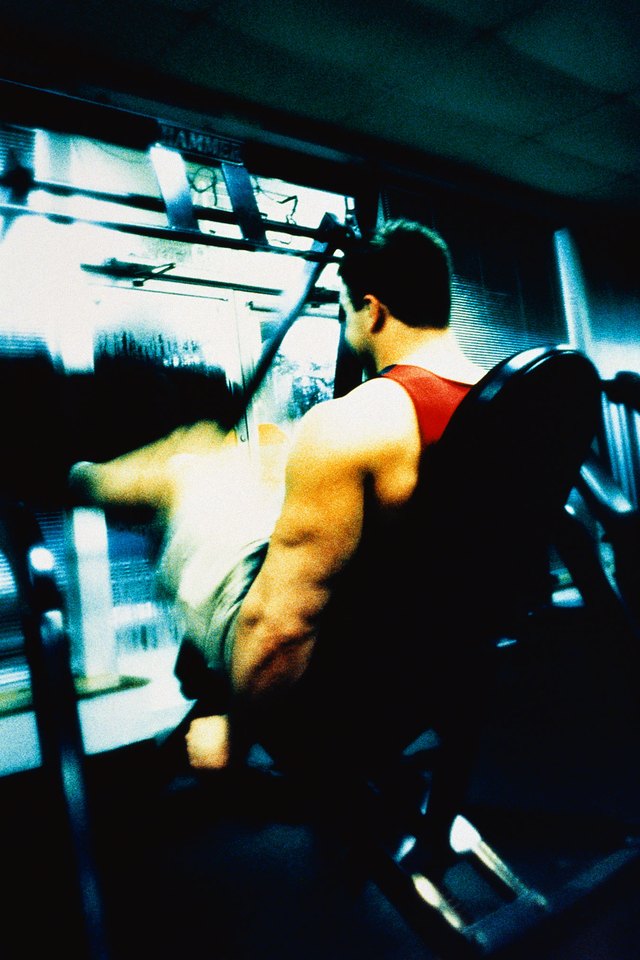What Muscles Do Inverted Leg Presses Work?

One of the benefits of using an inverted leg press is the amount of weight you can lift without placing undue stress on your body. Because the weight can only move in a predetermined direction, the machine helps protect you from injury by allowing you to lift heavy weight without having to worry about stabilizing it throughout the movement. And it works many of the major muscles in your lower body.
Quadriceps
Your quadriceps muscles, which are located on the front and sides of your thighs, are the primary muscles worked during the inverted leg press. This group of muscles is mainly used to extend your lower leg by straightening your knee, a movement that is completed under a load when performing the inverted leg press. The muscles that make up your quadriceps are the rectus femoris, the vastus lateralis, the vastus medialis and the vastus intermedius.
Hamstrings
One of the secondary muscle groups worked in the inverted leg press are your hamstrings, which run down the back of your leg. The primary action of your hamstrings is to bend your knee and extend your hip. These muscles include the biceps femoris, the semimembranosus and the semitendinosus.
Calves
Another secondary muscle group worked when performing the inverted leg press is the muscles on the back of your lower leg. These calf muscles include the soleus and the gastrocnemius. The primary function of your calf muscles is to flex your foot by pointing your toes. When on a leg press machine, this muscle group tightens to help stabilize your legs during the movement.
Buttocks
A third secondary muscle group worked when you do an inverted leg press are the muscles that make up your buttocks: the gluteus maximus, gluteus medius and gluteus minimus. These are muscles that spring into action whenever you straighten your hips, such as when you rise from a squatting position. This movement is made under stress when performing the inverted leg press.
References
Writer Bio
Keith Strange spent more than a decade as a staff writer for newspapers in the southeastern United States, winning numerous awards for his work. He has a B.S. in wellness/sports medicine from Averett University and completed graduate work in exercise physiology. Strange is a former competitive martial artist and holds a third-degree black belt in tae kwon do.
